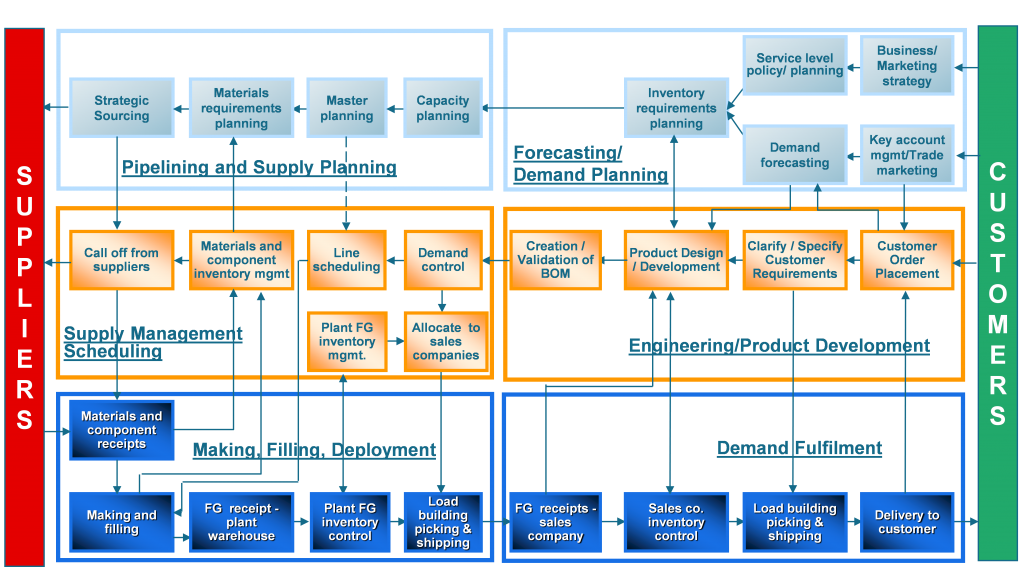 Materials managers, buyers, transportation coordinators, category managers, product engineers, suppliers, quality controllers, etc. all make up this mysterious world of Supply Chain. If you look at that list and think that one role is more important or more critical than another, then think again. Would it surprise you to learn that a 57 – cent part may have been the cause of GM’s recall crisis? According to a recent article – The 57-cent part at the center of GM’s recall crisis, a 57-cent part inside the ignition switch was redesigned in 2006, but the part number was never changed. It is standard practice, by the way, for the manufacturer to change the part number any time a part is redesigned. “The fact that the part number wasn’t changed prevented federal safety investigators, and even some GM employees, from figuring out what caused the accidents. Accidents declined in newer vehicle models, but investigators could not figure out why, since there didn’t appear to be any change in how they were manufactured.” Some are suggesting that the lack of a new part number is a sign of a deliberate cover – up, while others are suggesting that this is criminal deception . . . Maybe BUT maybe not!
Materials managers, buyers, transportation coordinators, category managers, product engineers, suppliers, quality controllers, etc. all make up this mysterious world of Supply Chain. If you look at that list and think that one role is more important or more critical than another, then think again. Would it surprise you to learn that a 57 – cent part may have been the cause of GM’s recall crisis? According to a recent article – The 57-cent part at the center of GM’s recall crisis, a 57-cent part inside the ignition switch was redesigned in 2006, but the part number was never changed. It is standard practice, by the way, for the manufacturer to change the part number any time a part is redesigned. “The fact that the part number wasn’t changed prevented federal safety investigators, and even some GM employees, from figuring out what caused the accidents. Accidents declined in newer vehicle models, but investigators could not figure out why, since there didn’t appear to be any change in how they were manufactured.” Some are suggesting that the lack of a new part number is a sign of a deliberate cover – up, while others are suggesting that this is criminal deception . . . Maybe BUT maybe not!
I must admit that I was not surprised nor did I immediately jump to the conclusion that this was a deliberate cover-up or criminal deception. What I did think was that here is yet another example of the critical role Supply Chain plays within an organization. Here is an illustration of a typical Supply Chain model:
If this model looks complex, my assumption is that GM’s model is even more so. It is that complexity and the numerous handoffs (between many, many different people, departments, geographies, etc.) that leave any organization vulnerable to errors. In addition, many (maybe even most) of the players don’t understand what a Supply Chain is, how it works, or their role within it. Ask an engineer, and I have, within a typical manufacturing company what his/ her role is within the Supply Chain and more than likely you will hear that they are NOT part of the Supply Chain. I am only using engineering as an example but there are many other players that would provide the same response. On the flip side, a materials manager may readily identify himself as a member of the Supply Chain but probably does not realize how his role impacts the entire system. The 57 – cent part debacle may be as simple as someone forgetting to change a part number (by the way, my assumption is that GM has hundreds of thousands of part numbers and hundreds of changes per day) and the rest is now in the press everyday.
What does this teach us about a Supply Chain and Supply Chain Management? Here are a few thoughts:
- A Supply Chain is just that, a chain. When one link is broken it will dismantle the entire chain
- Every link needs to know how it fits into the overall Supply Chain
- Your Supply Chain is only as strong as your weakest link – therefore every link counts
- If you can’t get the everyday stuff right, the rest doesn’t matter
- Most professionals have no clue what a Supply Chain is, let alone what it does or the Value it can provide
- Supply Chain management should be a core competency for any organization that is providing goods or services (yes, even service organizations have Supply Chains)
By the way, GM like many other large, global organizations probably has more policies, processes, technology and tools than most within their Supply Chain. The real question is whether or not those resources have been fully adopted within the organization. It is very possible that the 57-cent error was not seen as a big deal but ask the families of those that died what they think. Let’s not underestimate the value that the Supply Chain can bring and also the tremendous responsibility IT has. But first we need to define IT, communicate IT, embrace IT and manage IT.
Join in the conversation and let us know what you think . . . . . .


8 Comments
It’s common practice not to change a part number per se, but to change the revision level of that part number if a drawing and/or specifications are involved and an engineering change has been made to the part. That does not explain why this change could not be tracked through the GM processes though. And in no way lessens the pain of the families involved. It does make you wonder about poor decisions made, just to save a few dollars on the bottom line… corporate America needs to start thinking about the bigger picture and the consequences of just focusing on the bottom line.
Pingback: News You Can Use | Investment (Asset) Recovery – Getting to 300X
Pingback: News You Can Use | Gaining Respect in the Supply Chain -Getting to 300X – Part II
Pingback: No RSVP = Supply Chain Chaos - News You Can Use
Pingback: When Supply Chains Kill Thousands That Could Become Millions!! - News You Can Use
Pingback: Is your Organization Trapped in the Fear Zone? - News You Can Use
Pingback: Sanders, Clinton, Trump, Cruz – Aaaarrrrrghhh Why Should I Care? - News You Can Use
Pingback: Ask For a Loss Review ....From Your Suppliers - News You Can Use